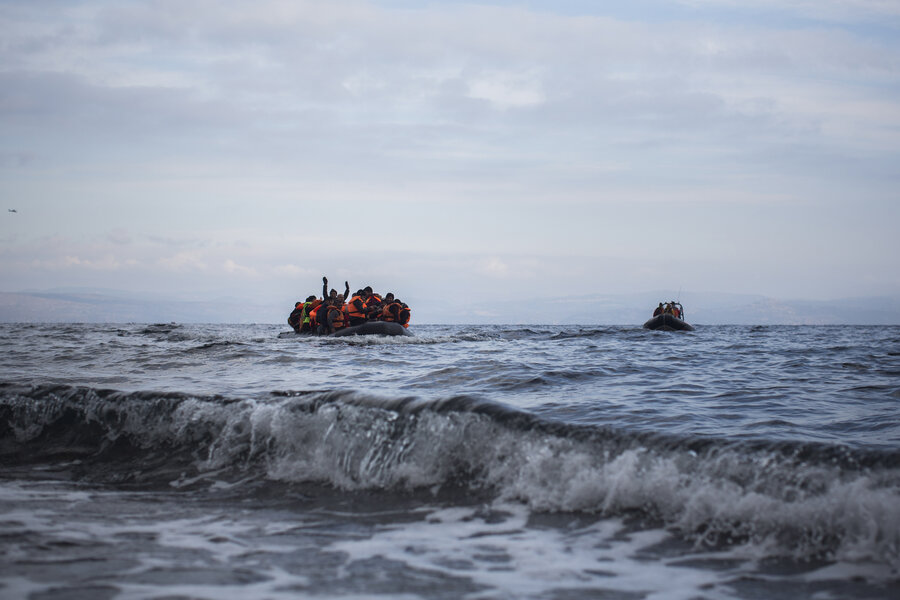Can a robot rescue drowning migrants? Meet 'Emily'
Loading...
How can a robot from Arizona help migrants fleeing violence in Africa and the Middle East?
Violence has forced nearly 60 million people from their homes across the world, according to the latest figures from the United Nations High Commissioner for Refugees. More than a million migrants, many from Syria, crossed into Europe in 2015, by sea. Of those, nearly 4,000 died en route, many in leaky, unsafe boats that capsized in the rough waters of the Mediterranean Sea.
One community in Greece, the island of Lesbos, where an average of 2,000 refugees arrive daily, is calling in help in the form of a robot named "Emily."
"Emily," short for the Emergency Integrated Lifesaving Lanyard, is a remote-controlled rescue vehicle capable of finding and helping people in water who are in distress. Developed by Arizona-based company Hydronalix, "Emily" is basically a 25-pound, 4-foot-long, red flotation device on jet skis that can zip out to rescue victims flailing at sea.
Which is why the Coast Guard in Lesbos, Greece, invited Texas A&M University's Center for Robot-Assisted Search and Rescue to launch a pilot program to see if "Emily" can help save the thousands of migrants who arrive daily on this Greek island, Wired first reported.
Here's how "Emily" might be put to work helping migrants: An operator in a remote location would send the robot, which can travel at a speed of 20 mph, out to migrants struggling in the waters off Lesbos. Up to five people at a time can grasp onto the 4-foot-long flotation device tethered to a 2,000-foot-long rope, which rescuers could then manually reel in. Helicopter drones also tethered to ropes can send back aerial images of the rescue in real time to help operators best manipulate the robot.
“We can run the boat out there and we can start plucking people that can actually hold on and get them out of the way,” John Sims, a fire captain formerly of the US Coast Guard, who’s operating the robots for the deployment, told Wired. “And then the live lifeguard can do his job and get out there to get the unconscious people.”
It's not the first time technology has been called in to help victims of the refugee crisis. IKEA recently unveiled a line of smart shelters, 57- and 188-square foot, easily assembled refugee shelters complete with solar panels, mosquito nets, and lockable doors designed to last three years – a giant step up from the hot, cramped tents that have become standard in most camps.
While it can provide intelligent solutions to some of the globe's most pressing problems, technology has its limitations.
"Emily’s" designers have pointed out that its long tether could get tangled in the propeller of a Coast Guard boat, for example.
“One has to be a little bit careful,” M. Ani Hsieh, co-chair of the Safety, Security and Rescue Robotics committee at the IEEE Robotics and Automation Society, told Wired. “What many people who work with rescue robots will tell you is a lot of things start with good intentions. [But you never know its best use] until you actually have people on the ground and see things being tested.”






